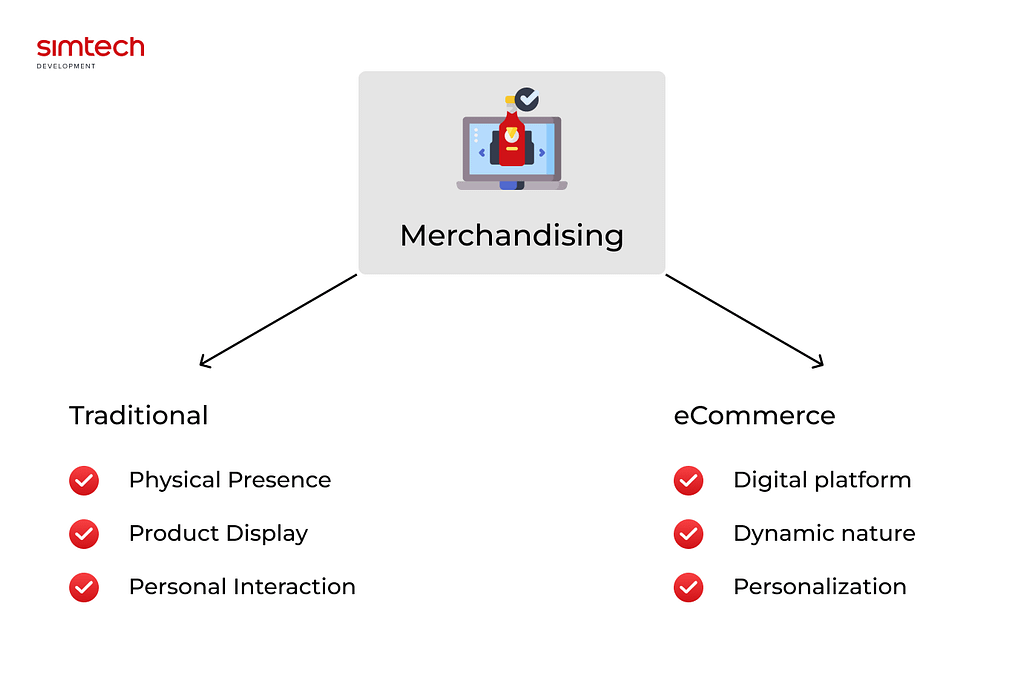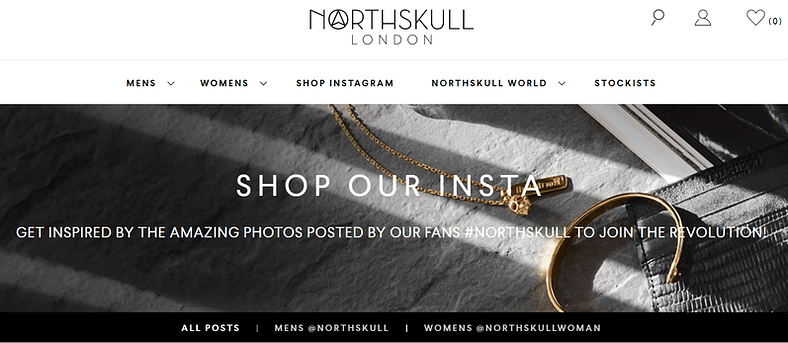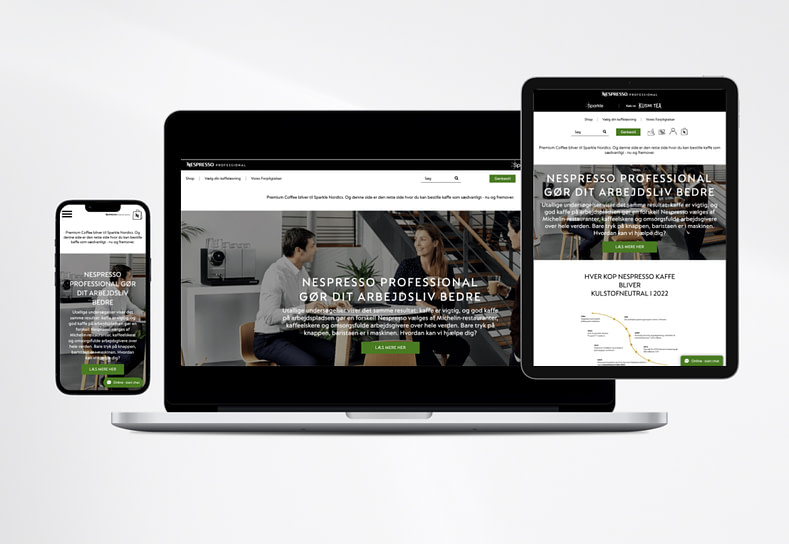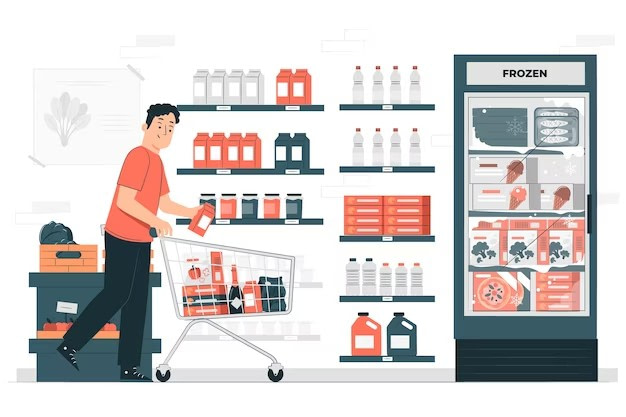Merchandising plays a crucial role in attracting customers, driving sales, and creating a positive brand image. It helps optimize the customer experience, increase engagement, and improve inventory management, ultimately contributing to the success and growth of an ecommerce business. In this post, we’re going to reveal the importance of eCommerce merchandising for an eCommerce website, with a particular focus on marketplace merchandising, and share some best practices with online entrepreneurs.
What is eCommerce Merchandising
eCommerce merchandising is about strategies and techniques used to present and promote products effectively on an eCommerce website. It involves optimizing product listings, categorizing products, creating attractive visuals, and implementing personalized recommendations to enhance the overall shopping experience.
Traditional Product Merchandising vs eCommerce Merchandising

eCommerce merchandising differs from traditional visual merchandising in several ways:
- Digital platform: eCommerce merchandising takes place on online platforms, while traditional visual merchandising is focused on physical retail spaces.
- Dynamic nature: eCommerce merchandising allows for real-time changes and updates, while traditional visual merchandising requires physical changes to displays and layouts.
- Personalization: eCommerce merchandising leverages customer data to provide personalized recommendations, offers, and content, which is not possible in traditional visual merchandising.
Website merchandising is a crucial aspect of eCommerce strategy, involving the presentation and organization of products on your online store. It encompasses various techniques to optimize the online shopping experience, such as strategic product placements, compelling visuals, and persuasive content.
You may think of replacing a traditional store with an eCommerce site after all our recommendations. Don’t do that. Both types can supplement each other. Here are some pros in favor of traditional product merchandising that will make you rethink:
- Physical Presence: Traditional merchandising relies on a physical store presence, allowing customers to physically interact with products. eCommerce merchandising is entirely online, with no physical store presence. The only opportunity for a customer to ‘touch’ an item is booking an online call or asking for a video conferencing.
- Product Display: Traditional product merchandising focuses on creating visually appealing displays in-store to attract customers. eCommerce merchandising relies on high-quality product images, descriptions, and reviews to attract and engage online customers.
- Personal Interaction: Traditional merchandising allows for face-to-face interactions between customers and salespersons, who can provide personalized assistance and recommendations. eCommerce merchandising may offer chatbots and conversation intelligence powered customer support, but lacks the personal touch of in-person interaction.
What approach to choose or how to combine both is the task of the business itself. Anyway, the ultimate choice will depend on the specifics of a particular business.
How eCommerce Merchandising Works
eCommerce merchandising leverages data analytics and customer insights to understand consumer behavior and preferences. This information helps in creating targeted product recommendations, personalized offers, and relevant content to engage and convert customers. It also involves optimizing product pages with high-quality images, detailed descriptions, and customer reviews to increase trust and drive sales.
The concept also entails creating an attractive and user-friendly online shopping experience to drive sales and increase customer satisfaction. Here’s how eCommerce merchandising works:
- Product selection: Merchandisers analyze market trends, customer preferences, and sales data to determine which products to offer. They consider factors like demand, profitability, and competition to curate a product assortment that meets customer needs.
- Product presentation: They focus on presenting products in an appealing and informative manner. This includes images, descriptions, and accurate specifications. They may also use videos, customer reviews, and ratings to enhance the product presentation and demonstrate social proof.
- Product placement: Merchandisers strategically position products on the website to maximize visibility and increase the chances of conversion. They may highlight best-selling or new products on the homepage or category pages, and use cross-selling and upselling techniques to encourage customers to explore related or higher-priced items.
- Pricing and promotions: Merchandisers set competitive pricing strategies to attract customers. They may offer discounts, bundle products, or run promotional campaigns to drive sales. Specialists also monitor competitors’ pricing and adjust their strategies accordingly.
- Site navigation and search: eCommerce merchandisers optimize the website’s navigation and search functionality to help customers easily find products. They categorize products, create filters, and implement search algorithms to improve the shopping experience and increase conversion rates.
- Personalization: Marketers use customer data and website analytics to personalize the shopping experience. They may recommend products based on past purchases, browsing history, or demographic information. Personalization helps increase customer engagement and encourages repeat purchases.
- Cross-selling and upselling: Web merchandising specialists strategically display related or complementary products to encourage customers to make additional purchases. This can be done through product recommendations, “Customers who bought this also buy” sections, or “Frequently bought together” suggestions.
- Inventory management: Merchandisers ensure that products are in stock and available for purchase. They monitor inventory levels, coordinate with suppliers, and update product availability on the website in real-time. This helps prevent out-of-stock situations and improves customer satisfaction.
- Testing and optimization: eCommerce website marketers continuously test and optimize various elements of the online shopping experience. They conduct A/B testing to compare different layouts, designs, or promotional strategies to identify the most effective approaches. This iterative process helps improve conversion rates and overall performance.
By employing these web merchandising techniques and adhering to merchandising standards, online retailers can enhance the customer experience, increase sales, and build long-term relationships with their customers.
Advanced Techniques in eCommerce Merchandising
Apart from the strategies mentioned above, you can act like a pro with the following techniques to skyrocket your merchandise sales, focusing on merchandising in eCommerce:
- Retargeting: Use retargeting techniques to re-engage customers who have previously visited your site but did not make a purchase. This can involve displaying targeted ads on other websites or sending personalized emails to remind customers of the products they are interested in.
- Social media marketing: Leverage social media platforms to promote your products, engage with customers, and drive traffic to your eCommerce site. This can include running targeted ad campaigns, partnering with influencers, and creating engaging content to build brand awareness and drive sales.
Ultimately, eCommerce merchandising aims to create a seamless and enjoyable shopping experience for customers, driving sales and fostering customer loyalty in the online retail space.
Current Trends in eCommerce Merchandising
Regardless of the eCommerce merchandising share in your marketing strategy, one should be aware of the current trends to improve their online store KPIs. The latest trends include:
- Focus on personalization: Customizing the shopping experience based on individual preferences and behavior.

Sephora recommend additional products that can supplement the user’s choice
- Apply UGC (user-generated content): Incorporating customer reviews, ratings, and testimonials to build trust and influence purchase decisions.

Our client Northskull uses UGC for promoting own brand
- Visual storytelling: Using compelling visuals and videos to tell a brand’s story and engage customers.



Product pages of sellers on Urbankissed tell a story with images. You can apply their website as an example of how to implement visual storytelling
- Optimize for mobiles: DesigneCommerce websites and product pages to be mobile-friendly and responsive.

These responsible versions were developed by the Simtech Development team for Nespresso, an official reseller of famous coffee machines
5 Key Elements of eCommerce Merchandising
Not only trends contribute to the success of your eCommerce website. To build an effective merchandising strategy, you should incorporate the following 5 key elements of eCommerce merchandising:
- Product Assortment: This involves selecting and curating a range of products that align with your target audience’s preferences and needs. It is essential to offer a diverse assortment to cater to different customer segments.
- Pricing Strategy: Determining the right pricing strategy is about setting competitive prices, offering discounts or promotions, and considering factors like production costs, competitor pricing, and customer value perception.
- Product Presentation: High-quality product images, detailed descriptions, customer reviews, and videos provide a comprehensive understanding of the product.
- Personalization: Customizing the shopping experience for individual customers can be achieved through personalized product recommendations, targeted email marketing, and personalized landing pages based on customer preferences and behavior.
- User Experience: Providing a seamless and enjoyable user experience means having a user-friendly website design, easy navigation, fast loading times, secure payment options, and responsive customer support.
14 Benefits of Online Merchandising

Online entrepreneurs can gain multiple benefits for their businesses with online merchandising:
- Improved customer experience: Effective merchandising techniques such as personalized recommendations and intuitive navigation enhance the shopping experience, leading to increased customer satisfaction and loyalty.
- Increased conversion rates: By showcasing products in an appealing and user-friendly manner, eCommerce merchandising can drive higher conversion rates and boost sales.
- Higher average order value: Strategic placement of related products, cross-selling, and upselling techniques can encourage customers to add more items to their cart, resulting in higher average order values.
- Enhanced brand image: Well-executed eCommerce merchandising can help build a strong brand image by showcasing products in a visually appealing and consistent manner.
- Increased reach: Online merchandising allows businesses to reach a global audience, expanding their customer base beyond their physical location.
- Cost-effectiveness: Setting up an online store is generally more cost-effective than maintaining a physical store. There are no expenses related to rent, utilities, or staffing.
- 24/7 availability: Online stores are open 24/7, allowing customers to shop at their convenience. This flexibility can lead to increased sales and customer satisfaction.
- Personalized shopping experience: Online merchandising allows businesses to collect customer data and personalize the shopping experience. This can include showing personalized product recommendations or sending targeted marketing messages.
- Easy inventory management: Online merchandising platforms often provide tools for easy inventory management. This helps businesses keep track of stock levels, reduce overstocking or stockouts, and improve overall efficiency.
- Easy comparison shopping: It also allows customers to easily compare prices, features, and reviews of different products. This transparency can help customers make informed purchasing decisions and can also drive competition among businesses.
- Access to customer data: Merchandising platforms provide businesses with valuable customer data, such as purchase history, browsing behavior, and demographic information. This data can be used to improve marketing strategies, personalize offers, and enhance customer satisfaction.
- Lower marketing costs: Online merchandising platforms, equipped with ecommerce merchandising tools, often offer various marketing tools, such as email marketing, social media integration, and search engine optimization. These tools can help businesses reach their target audience at a lower cost compared to traditional marketing methods.
- Real-time analytics: The approach helps platforms provide real-time analytics, allowing businesses to monitor sales, customer behavior, and other key metrics. This data can be used to make data-driven decisions and optimize merchandising strategies.
- Easy scalability: Online merchandising allows businesses to easily scale their operations as they grow. Adding new products, expanding into new markets, or reaching more customers can be done with minimal effort and cost compared to physical stores.
With well-done merchandising in your eCommerce store or marketplace, you can significantly improve your business wellbeing.
5 strategies for effective eCommerce merchandising
- Tailor the shopping experience to individual customers by using data and analytics to understand their preferences and purchase history.
- Use interactive features to showcase products in a visually appealing way. Pay attention to the layout, color scheme, and overall design of your website to create an attractive and user-friendly browsing experience.
- Recommend related products or suggest upgrades to encourage customers to add more items to their cart or upgrade to a higher-priced option. This can be done through product bundles, product comparison tools, or personalized recommendations based on their browsing or purchase history.
- Incorporate user reviews, ratings, and testimonials to build trust and credibility. Highlight positive customer experiences and encourage customers to leave reviews, aligning with effective marketplace merchandising practices. This can help potential buyers make informed decisions and increase their confidence in purchasing from your online store.
- Offer special promotions, discounts, or limited-time offers to incentivize purchases and create a sense of urgency. This can be done through flash sales, free shipping, loyalty programs, or exclusive discounts for newsletter subscribers. Regularly communicate these offers through email marketing, social media, or targeted advertising campaigns.
Measurement and Analysis of eCommerce Merchandising
Now that you’ve implemented your eCommerce merchandising approach. How to understand whether it is failure or success?
Understanding the success of an eCommerce merchandising strategy requires comprehensive measurement and analysis. Here are some key steps to consider:
- Define Key Performance Indicators (KPIs). Identify the metrics that align with your merchandising goals. These may include conversion rate, average order value, revenue per visitor, bounce rate, cart abandonment rate, and customer lifetime value.
- Track and Analyze Website Traffic. Use embedded analytics tools like Google Analytics to monitor the traffic to your eCommerce site. Analyze the sources of traffic, user behavior, and engagement metrics to understand how visitors interact with your merchandising efforts.
- Monitor Conversion Rate. Measure the percentage of visitors who make a purchase or complete a desired action on your site. Analyze conversion rates across different product categories, customer segments, and marketing channels to identify areas of success and improvement.
- Assess Product Performance. Analyze sales data to evaluate the performance of individual products or product categories. Identify top-selling products, products with high margins, and those with low conversion rates or high return rates. This analysis can help you optimize your merchandising strategy by focusing on high-performing products.
- Evaluate Customer Feedback. Monitor customer reviews, ratings, and feedback to understand their satisfaction levels and identify any issues or areas for improvement. This qualitative data can provide insights into the effectiveness of your merchandising strategy in meeting customer expectations.
- Conduct A/B Testing. Implement controlled experiments by testing different merchandising strategies, such as product placement, pricing, or promotional offers, on a subset of your website visitors. Compare the performance of different variations to determine which strategy yields the highest conversion rates or other desired outcomes.
- Benchmark Against Competitors. Analyze your competitors’ eCommerce merchandising strategies to gain insights into industry best practices. Compare your own performance against industry benchmarks to understand where your strategy stands and identify areas for improvement.
- Continuously Iterate and Improve. Regularly review and analyze the collected data to identify trends, patterns, and areas for improvement. Use the insights gained to refine your merchandising strategy, make data-driven decisions, and optimize your eCommerce performance.
- Average order value. Monitor the average amount spent by customers per order to assess the impact of merchandising tactics.
- Click-through rate. Analyze how often visitors click on product recommendations or promotional banners to gauge their engagement.
- Cart abandonment rate. Measure the percentage of customers who add items to their cart but do not complete the purchase to identify potential issues in the merchandising process.
By following these steps and continuously monitoring and analyzing key metrics, you can gain a deeper understanding of the success of your eCommerce merchandising strategy and make informed decisions to drive growth and improve customer satisfaction.
Tools and Solutions for eCommerce Merchandising
There are several tools and solutions available to help with eCommerce merchandising.
Google Analytics

Provides in-depth insights into website traffic, user behavior, and conversion rates. While not specifically an eCommerce merchandising tool, Google Analytics can provide valuable insights into customer behavior, product performance, and conversion rates. By analyzing this data, you can optimize your merchandising strategies.
Optimizely

A/B testing platform that allows you to experiment with different merchandising strategies and measure their impact.
Dynamic Yield

Personalization platform that enables you to deliver tailored experiences and recommendations to customers.
Hotjar

Heat mapping and user behavior analytics tool that helps you understand how visitors interact with your website.
Salesforce Commerce Cloud

An enterprise-level ecommerce platform that provides advanced merchandising tools, including AI-powered product recommendations, personalization, and optimization features.
The choice of tools depends on your specific requirements and the platform you are using for your eCommerce store.
eCommerce Merchandising Best Practices for Every Online Brand

Finally, when you’re on your way in embedding an eCommerce merchandising approach into your business, you will need to have a checklist of best practices before your eyes. Let’s summarize what we’ve learned from this article:
- Understand your target audience: Conduct thorough market research to understand your target audience’s demographics, preferences, and behavior. This will help you tailor your merchandising strategy to meet their needs and expectations.
- Optimize product descriptions: Write compelling and detailed product descriptions that highlight the unique features, benefits, and specifications of each item. Use relevant keywords to improve search engine optimization (SEO) and make it easier for customers to find your products. Study competitor SEO strategies to help uncover new ranking opportunities for your own store
- High-quality product images: Use high-resolution images that showcase your products from multiple angles. Invest in professional photography or consider using 360-degree product images to provide a more immersive shopping experience.
- Clear navigation and categorization: Organize your products into logical categories and subcategories to make it easy for customers to find what they’re looking for. Use clear and intuitive navigation menus and filters to help shoppers refine their search results.
- Personalization and recommendations: Implement personalized product recommendations based on customers’ browsing and purchase history. Use algorithms to suggest similar or complementary products, increasing the chances of cross-selling and upselling.
- Limited-time promotions and discounts: Offer exclusive promotions, discounts, or limited-time deals to create a sense of urgency and encourage immediate purchases. Display these offers prominently on your website and in marketing campaigns.
- User-generated content: Incorporate customer reviews, ratings, and testimonials on your product pages to build trust and credibility. Encourage customers to leave reviews by offering incentives or rewards.
- Mobile optimization: Ensure your website is mobile-friendly and optimized for various devices and screen sizes. With the increasing use of smartphones for online shopping, it’s crucial to provide a seamless mobile experience.
- Streamline checkout process: Simplify the checkout process by minimizing the number of steps required to complete a purchase. Offer multiple payment options and provide clear instructions to avoid cart abandonment.
- Continuous testing and optimization: Regularly test different merchandising strategies, layouts, and features to identify what works best for your target audience. Use analytics tools to track key performance metrics and make data-driven decisions to optimize your eCommerce merchandising efforts.
Remember, eCommerce merchandising is an ongoing process, and it’s important to stay updated with the latest trends and technologies to stay ahead of the competition.
FAQ
What is eCommerce merchandising
eCommerce merchandising refers to the strategies and tactics used to promote and sell products online. It involves optimizing product listings, creating compelling product descriptions and images, managing inventory, and implementing various promotional techniques to drive sales.
Why is eCommerce merchandising important?
eCommerce merchandising is important because it can significantly impact the success of an online store. Effective merchandising can attract more customers, increase conversions, and boost revenue. It helps create a positive shopping experience for users, making it more likely for them to make a purchase.
What are some key elements of eCommerce merchandising?
Some key elements of eCommerce merchandising include product categorization, product presentation (images and descriptions), pricing strategies, inventory management, cross-selling and upselling techniques, promotional campaigns, and personalized recommendations.
How can I optimize product listings for better merchandising?
To optimize product listings, make sure to include clear and detailed product descriptions, high-quality images, accurate pricing information, and relevant keywords. Use bullet points or lists to highlight key features and benefits. Additionally, consider adding customer reviews and ratings to build trust and credibility.
What is the role of pricing in eCommerce merchandising?
Pricing plays a crucial role in eCommerce merchandising as it directly impacts customer purchasing decisions. Retailers must carefully analyze market trends, competitors’ pricing, and customer preferences to set competitive and profitable prices. Pricing strategies such as discounts, bundle offers, and dynamic pricing can also be used to attract customers and drive sales.
How can I effectively manage inventory for eCommerce merchandising?
Effective inventory management is essential for eCommerce merchandising to ensure products are available when customers want to purchase them. Utilize inventory management software to track stock levels, set up automatic replenishment alerts, and manage backorders. Regularly analyze sales data to forecast demand and plan inventory accordingly.
What are some effective cross-selling and upselling techniques?
Cross-selling involves recommending related products to customers, while upselling involves suggesting higher-priced alternatives or upgrades. Effective techniques include displaying “Customers who bought this also bought” recommendations, offering bundle deals, showcasing product comparisons, and highlighting premium features or benefits.
How can I create personalized recommendations for eCommerce merchandising?
Personalized recommendations can be created by analyzing customer data such as purchase history, browsing behavior, and demographics. Use recommendation algorithms to display products that are likely to be of interest to each individual customer. Implement features like “Customers who viewed this also viewed” or “Recommended for you” to enhance the shopping experience and increase sales.
What are some effective promotional techniques for eCommerce merchandising?
Effective promotional techniques include offering discounts or promotions during holidays or special events, creating limited-time offers, implementing loyalty programs, using email marketing campaigns, and leveraging social media advertising. It’s important to regularly analyze the effectiveness of these promotions and adjust strategies accordingly.
How can I measure the success of my eCommerce merchandising efforts?
Key performance indicators (KPIs) such as conversion rate, average order value, customer lifetime value, and repeat purchase rate can be used to measure the success of eCommerce merchandising efforts. Additionally, analyzing website analytics, customer feedback, and sales data can provide valuable insights into the effectiveness of different merchandising strategies.

